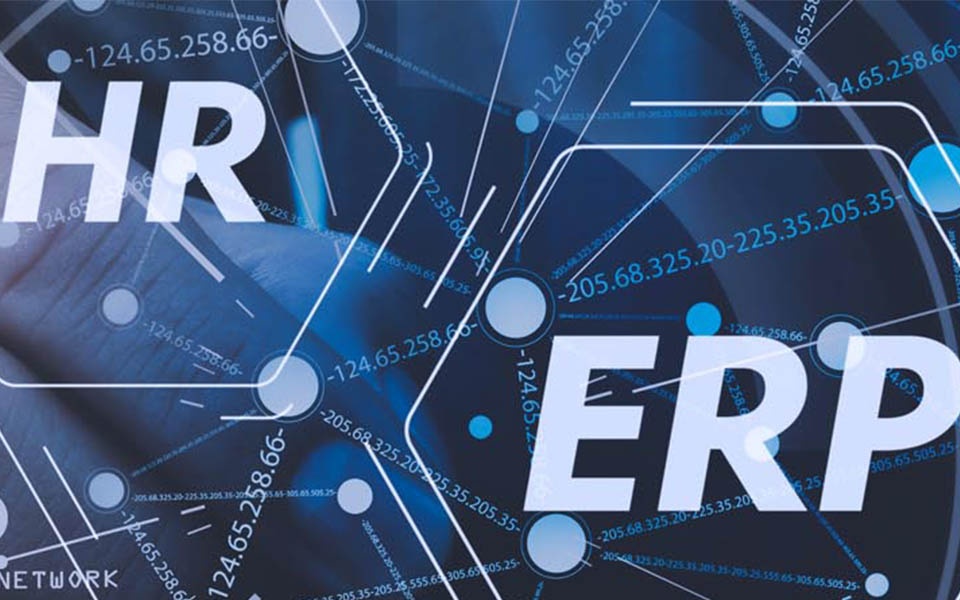In today’s competitive business landscape, organizations constantly seek ways to optimize operations, streamline processes, and make data-driven decisions. Two crucial tools that have emerged as pillars of modern business management are Enterprise Resource Planning (ERP) systems and Human Resource Information Systems (HRIS). While both systems offer valuable capabilities, integrating a robust HRIS with an ERP can take your organization to new heights.
ERP vs. HRIS: Understanding the Difference
ERP: The All-in-One Business Management Solution
An ERP system is designed to be a comprehensive solution for managing various aspects of your business, including finance, supply chain, manufacturing, and customer relationship management. While most ERP systems include basic HR and payroll functionalities, they often need more scope and depth.
Typical HR and payroll features in an ERP
- Employee information management
- Basic payroll processing
- Time and attendance tracking
- Leave management
However, these features are often not as specialized or advanced as those a dedicated HRIS offers.
HRIS: Empowering HR with Specialized Tools
On the other hand, an HRIS is specifically designed to cater to the unique needs of human resources departments. It offers a wide range of features and functionalities that enable HR professionals to efficiently manage the entire employee lifecycle, from recruitment to retirement.
Key features of a robust HRIS
- Advanced applicant tracking and recruitment management
- Comprehensive employee onboarding and offboarding processes
- Performance management and goal setting
- Learning and development tracking
- Succession planning
- Sophisticated payroll processing and tax compliance
- Self-service portals for employees and managers
- Powerful reporting and analytics capabilities
An HRIS provides HR teams with the tools they need to attract, develop, and retain top talent while ensuring compliance with labor laws and regulations.
The Power of Integration: Why ERP and HRIS are Better Together
While an ERP alone can provide basic HR and payroll functionality, integrating it with a dedicated HRIS unlocks a new level of efficiency and effectiveness.
- Enhanced Data Accuracy and Consistency: Integrating an ERP and HRIS, ensures that employee data is consistent across all systems. This reduces the risk of errors and discrepancies that can arise from manual data entry or data silos.
- Streamlined Processes: Integration allows for seamless data flow between ERP and HRIS, eliminating the need for manual data transfer and reducing administrative burdens. This enables HR teams to focus on strategic initiatives rather than tedious data entry tasks.
- Improved Decision-Making: An integrated system offers access to a wealth of data that spans the entire organization. This allows for more comprehensive reporting and analytics, enabling more informed decisions based on real-time insights.
- Increased Efficiency: Automating and integrating key HR processes with an ERP significantly reduces the time and effort required to manage employee data, payroll, and other HR tasks. This increased efficiency translates into cost savings and improved productivity.
- Better Employee Experience: An integrated ERP and HRIS system allows for a seamless employee experience, with self-service portals that enable them to access their information, request time off, and view pay stubs from a single platform. This convenience leads to higher employee satisfaction and engagement.
Organizations must use technology to maintain a competitive edge in today’s rapidly evolving business landscape. While an ERP system offers a reliable framework to manage business operations, integrating it with a robust HRIS can elevate HR management to the next level. By leveraging the strengths of both systems, businesses can unlock unmatched efficiency, accuracy,
© Copyright CBIZ, Inc. All rights reserved. Use of the material contained herein without the express written consent of the firms is prohibited by law. This publication is distributed with the understanding that CBIZ is not rendering legal, accounting or other professional advice. The reader is advised to contact a tax professional prior to taking any action based upon this information. CBIZ assumes no liability whatsoever in connection with the use of this information and assumes no obligation to inform the reader of any changes in tax laws or other factors that could affect the information contained herein. Material contained in this publication is informational and promotional in nature and not intended to be specific financial, tax or consulting advice. Readers are advised to seek professional consultation regarding circumstances affecting their organization.
“CBIZ” is the brand name under which CBIZ CPAs P.C. and CBIZ, Inc. and its subsidiaries, including CBIZ Advisors, LLC, provide professional services. CBIZ CPAs P.C. and CBIZ, Inc. (and its subsidiaries) practice as an alternative practice structure in accordance with the AICPA Code of Professional Conduct and applicable law, regulations, and professional standards. CBIZ CPAs P.C. is a licensed independent CPA firm that provides attest services to its clients. CBIZ, Inc. and its subsidiary entities provide tax, advisory, and consulting services to their clients. CBIZ, Inc. and its subsidiary entities are not licensed CPA firms and, therefore, cannot provide attest services.
